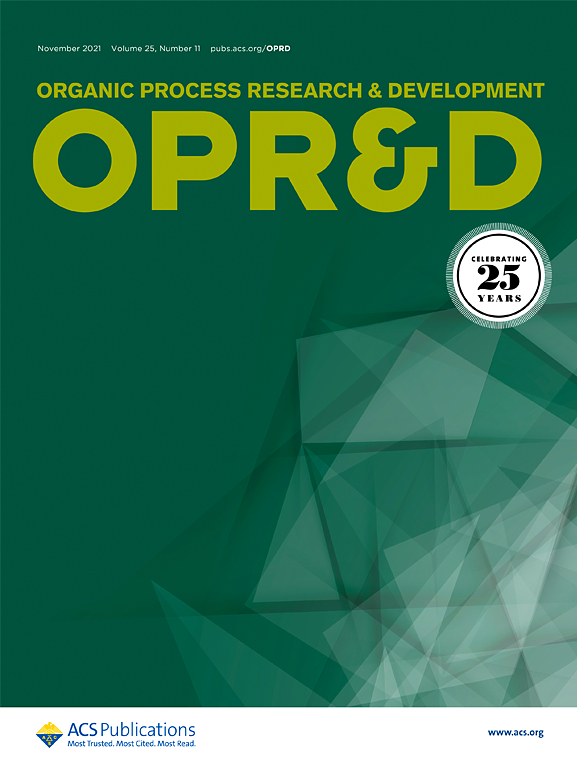A Concise Flow Synthesis of the IKZF2 Glue Degrader DKY709
IF 3.1
3区 化学
Q2 CHEMISTRY, APPLIED
引用次数: 0
Abstract
DKY709, a protein degrader targeting Helios (IKZF2), was efficiently synthesized via flow chemistry. The synthetic sequence comprised a visible-light-induced benzyl bromination, an amination–cyclization cascade, a photoinduced C(sp2)–C(sp3) coupling, and a high-temperature, high-pressure de-Boc/alkylation. Each reaction was systematically optimized under continuous-flow or stop-flow conditions to identify crucial parameters. The overall yield was substantially increased from 4.3% to 22.8% using commercially available starting materials, while the number of synthetic steps was reduced from five to four. The scalability of each reaction step was validated, and the direct use of intermediates in subsequent steps minimized workup complexity.

IKZF2型胶水降解剂DKY709的简洁流动合成
利用流动化学高效合成了一种靶向Helios的蛋白质降解物DKY709 (IKZF2)。该合成序列包括一个可见光诱导的苄基溴化反应、一个氨基环化级联反应、一个光诱导的C(sp2) -C (sp3)偶联反应和一个高温高压的脱boc /烷基化反应。在连续流或停流条件下对每个反应进行系统优化,以确定关键参数。使用市售原料,总收率从4.3%大幅提高到22.8%,而合成步骤从5个减少到4个。验证了每个反应步骤的可扩展性,并在后续步骤中直接使用中间体,最大限度地降低了作业的复杂性。
本文章由计算机程序翻译,如有差异,请以英文原文为准。
求助全文
约1分钟内获得全文
求助全文
来源期刊
CiteScore
6.90
自引率
14.70%
发文量
251
审稿时长
2 months
期刊介绍:
The journal Organic Process Research & Development serves as a communication tool between industrial chemists and chemists working in universities and research institutes. As such, it reports original work from the broad field of industrial process chemistry but also presents academic results that are relevant, or potentially relevant, to industrial applications. Process chemistry is the science that enables the safe, environmentally benign and ultimately economical manufacturing of organic compounds that are required in larger amounts to help address the needs of society. Consequently, the Journal encompasses every aspect of organic chemistry, including all aspects of catalysis, synthetic methodology development and synthetic strategy exploration, but also includes aspects from analytical and solid-state chemistry and chemical engineering, such as work-up tools,process safety, or flow-chemistry. The goal of development and optimization of chemical reactions and processes is their transfer to a larger scale; original work describing such studies and the actual implementation on scale is highly relevant to the journal. However, studies on new developments from either industry, research institutes or academia that have not yet been demonstrated on scale, but where an industrial utility can be expected and where the study has addressed important prerequisites for a scale-up and has given confidence into the reliability and practicality of the chemistry, also serve the mission of OPR&D as a communication tool between the different contributors to the field.

 求助内容:
求助内容: 应助结果提醒方式:
应助结果提醒方式:


